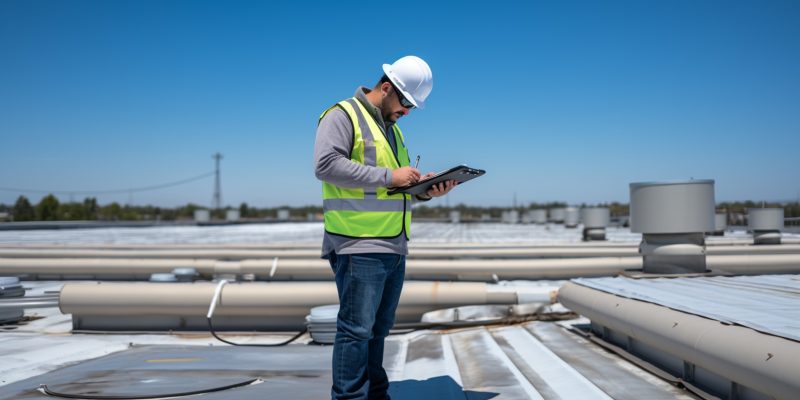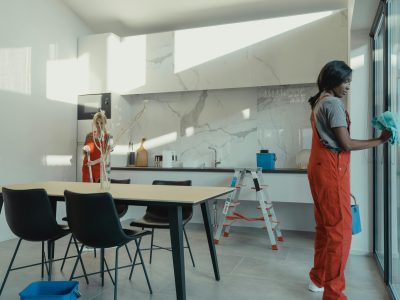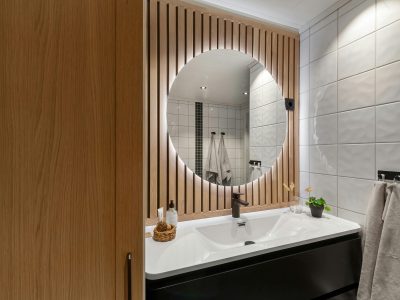Roof maintenance is one of the many tasks that come with managing a commercial building. Until a problem occurs, it’s often forgotten. A proactive approach is essential, given the importance of the roof in protecting the building and its valuable contents.
This comprehensive guide will walk you through all the steps necessary to establish a solid Commercial Roof Maintenance program. You’ll find all the information you need here, from understanding your roof’s needs to hiring professionals for regular inspections.
Creating a Roof Maintenance Plan for Commercial Roofs
Every commercial roof has its own unique requirements, just as each commercial building is different. A roof maintenance plan tailored to the specific needs of your building is essential for maintaining a high-quality roof.
Understanding Your Roof
You must first understand the specific needs of your roof before you can create a maintenance plan. Commercial roofs require different maintenance. Each roof type has its own challenges and considerations, whether it is a one-ply roof or a metal roofing. You can anticipate problems by learning about the material of your roof, its age and previous maintenance.
Metal Roofs
Metal roofs are another option that is popular because of their durability and low maintenance requirements. They’re not without their problems. The presence of rust and corrosion is a problem, particularly in places with high humidity levels or salinity. A metal roof can be extended by regular inspections and treatment of any rust. Sealants and coatings must also be applied periodically to maintain the integrity of the roof.
Built-Up Roofs
Built-Up Roofs are made up of layers of bitumen, reinforcing fabrics and finished membrane. BURs have a reputation for durability but still need regular maintenance. It is important to remove debris, check for water ponds, and look for cracks or blisters in the surface. To prevent further damage, any damage should be repaired immediately.
Single-Ply Roofs
There are three types of single-ply membrane roofs: PVC, TPO and EPDM. These materials, while durable and resistant against UV radiation can still be vulnerable to cracks and punctures. It is important to conduct regular inspections in order to detect and repair any damages. In addition, roof seams should be checked to ensure that they are watertight and intact.
Remember that the longevity of your roof depends largely on how it is maintained. Regular inspections and prompt repairs can extend the lifespan of your roof and save you money.
A proactive approach to roofing maintenance is beneficial for all types of commercial roofs and buildings. You can plan maintenance by knowing your roof’s needs and avoid costly, major problems.
Creating a Roof Information file
It is important to create a file of information about your roof. This file must contain all the important information regarding your roof. It should include its age, materials used, details of the roofing contractor, warranty information and a record of past inspections or repairs. Keep a detailed record to keep track of your roof’s current condition and provide valuable information for any future contractors you may hire.
The Contents of an Information File for Roofs
- Keep a complete collection of documents related to your project. Included in this should be roof drawings, plans, specifications and details of the locations of rooftop equipment, drains and entry doors.
- Approved Submissions: Save copies of all submissions of product data from suppliers used to build the new roof. You will have the information you need for future use.
- Keep all field reports relating to the installation of your roof. These documents can provide insight into the practical side of a project.
- Correspondence: Archive any correspondence between the general contractor and subcontractor as well as the architect, engineer or other parties involved in the installation of the roof. These correspondences can be crucial for understanding the decisions taken during a project.
- Keep a copy at hand of any warranties provided by the manufacturer. Include contact information so you can quickly access it in the event of an issue.
- Keep an inspection and maintenance report. Include digital photos to show the repairs. These records are essential to maintaining your roof’s health.
- Construction Modifications or Changes: Keep a record of all construction modifications or changes made to the roof. For example, new HVAC systems, exhaust vents, or roof walkway systems. These details are crucial for understanding the condition of the roof.
- Rooftop Equipment Service: Record all rooftop equipment service–detail who performed the services, when they took place, and on which roof. This will help you keep track of the equipment’s physical condition and any maintenance requirements.
This will allow you to have a good understanding of the history of your roof and its current condition. This proactive approach can help you avoid costly surprises in the future and give valuable insight to any roof professional you work with.
Establishing an Inspection Schedule
A routine inspection schedule should be part of any commercial roof maintenance program. Regular inspections will help you identify small problems before they turn into major ones, saving money and preventing disruptions to your business. Inspection frequency can vary depending on a number of factors including your roof’s age, condition and local climate. However, a good rule of thumb would be to inspect your roof at least twice per year and after severe weather.
Documenting Findings
It is important to document all findings after every inspection. Included in this documentation should be any issues that were identified, photographs, suggested actions, as well as any repairs or maintenance done. These documents should be included in your roof information file so that you can keep track of the condition of your roof over time. These records will give you valuable insight into the health of your roof and can help predict future maintenance requirements.
Hiring a Professional
A professional should conduct an inspection more thoroughly at least once per year. While the building manager or owner can perform routine inspections, it is recommended that a professional do so. Professional roofing contractors can identify problems you might miss. They know how to navigate safely through a roofing system with minimal damage.
You can be sure that the roof will be in good condition, that it will receive proper care, and that any issues that may arise are detected early. It can save you money in the long run by preventing costly roof repairs or premature replacement.













Comments